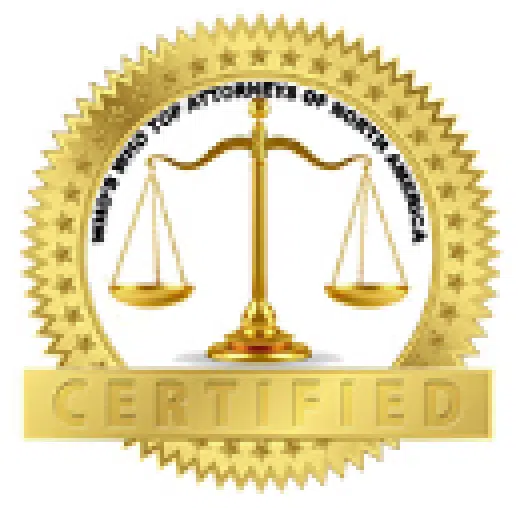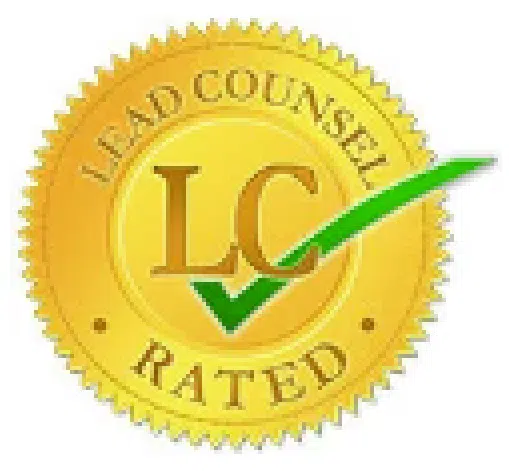As the largest and second most populous of New York City’s five boroughs, Queens is home to over 2.25 million people and covers 178 square miles. With so much hustle and bustle, many residents forego motor vehicles in favor of biking and walking.
Though many people consider biking and walking relatively safe in Queens, these activities can sometimes be deadly—especially if you don’t pay attention to your surroundings. Every day, people suffer injuries in biking and pedestrian accidents across the borough, many of which are entirely preventable. This guide to bicyclist and pedestrian safety can help you stay out of harm’s way when traversing the streets and sidewalks of Queens.
If you were injured in a Queens pedestrian or bicycle accident, call (855) NYC-HURT or contact us online to schedule a free consultation with our full-service personal injury law firm. Para servir mejor a todos los miembros de nuestra comunidad, ofrecemos servicios en español.
TABLE OF CONTENTS
- Queens Pedestrian Safety Tips
- Queens Bicycle Safety Tips
- New York’s Laws and Regulations for Pedestrian and Bicycle Safety
- Queens Infrastructure and Design
- Safety Resources for Queens Pedestrians and Cyclists
- Advocating for Safer Streets in Queens
- Everyone Shares a Responsibility for Safe Queens Streets
TABLE OF CONTENTS
- Queens Pedestrian Safety Tips
- Queens Bicycle Safety Tips
- New York’s Laws and Regulations for Pedestrian and Bicycle Safety
- Queens Infrastructure and Design
- Safety Resources for Queens Pedestrians and Cyclists
- Advocating for Safer Streets in Queens
- Everyone Shares a Responsibility for Safe Queens Streets
Queens Pedestrian Safety Tips
Most pedestrian traffic concentrates on sidewalks. However, you may also need to cross roads as you move from one block to another. In doing so, look out for bicycles and electric scooters. Other hazards include reduced visibility due to large vehicles in parking spots near intersections. You can reduce the risk of pedestrian accidents by adhering to a few pedestrian safety tips:
Incoming notifications and phone calls are a major distraction, especially when walking along the road. If you need to take a phone call, check your email, or otherwise take your eyes away from your surroundings, stop walking and move to a traffic-free area.
When crossing the street, use designated crosswalks. Wait for the pedestrian crosswalk signal before crossing. Avoid crossing in the middle of the street, even if there are no oncoming vehicles.
Before entering the crosswalk, look left and right to ensure all vehicles are stopped.
Sometimes, bicyclists and e-scooter drivers may use the sidewalk. Stay alert and move out of the way to avoid potential injuries.
Headphones can silence horns, sirens, bicycle bells, and other warnings. If you must wear headphones, keep one ear free.
Vehicles reversing in driveways or exiting alleys are pedestrian hazards. Stay alert when approaching these areas to avoid accidents.
If you plan on walking at night, wear bright clothing or fluorescent safety gear so others can easily spot you in the dark.
Poorly maintained sidewalks and roads increase the risk of accidental falls. Look out for cracks and potholes. If you're walking on a rainy or icy day, wear appropriate shoes.
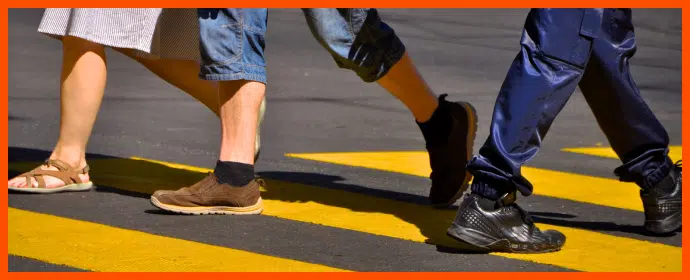
Queens Bicycle Safety Tips
Bicycling through Queens can save time, especially during the morning and evening rush hour. However, bicycling in Queens can also be risky. Cars often park in bike paths and block your route, and even other bicyclists don’t always adhere to the rules of the road. To reduce the risk of a bicycle accident, follow these bicycle safety tips:
New York requires all bicyclists under the age of 14 to wear helmets. While this law doesn't apply to adults, wearing a bicycle helmet can significantly reduce your risk of a severe cycling injury, including traumatic brain injuries.
Treat your bicycle like you would any other vehicle. Regularly check its tire pressure and replace tires when their tread wears out. Also, inspect your wheel spokes and the bike's structural integrity before taking it on the road.
Use a horn or bell to alert pedestrians and motorists as you approach. This can stop people from crossing your path, potentially avoiding collisions.
Turn on the bike's headlamp and tail light when cycling in the dark. If you don't have manufacturer-installed lights, purchase them from your local bike store.
Your bike's handlebars should be well-aligned and set at the proper level. If they loosen over time, tighten them at home or at a repair shop. Replace the handle grips when they wear out.
Queens has many bike lanes intended for bicyclists only. If a bike path isn't available, travel in the same direction as passing vehicles and stay on the right side of the road.
It's against state law to bike on expressways, interstates, and highways. It is also extremely dangerous.
When turning or changing lanes, use your arms to indicate your direction.
When biking, it is best to avoid using headphones altogether. Otherwise, use only one earbud.
If you plan to bike in the dark, wear bright or reflective clothing so other road users can see you more easily.
Some streets in Queens are known for being particularly risky for bicyclists, including 31st Avenue, 33rd Street, Astoria Boulevard, and Queens Boulevard. When cycling on busy roads, stay alert to your surroundings and follow bicycle safety protocols.
New York’s Laws and Regulations for Pedestrian and Bicycle Safety
New York has many laws regarding bicyclist and pedestrian safety. This section highlights some of the most important.
Pedestrian Laws
New York pedestrian traffic regulations include the following:
- Pedestrians can use marked or unmarked crosswalks to cross roads unless otherwise prohibited by a traffic-control signal. You should not cross when a traffic light is yellow or green.
- When using a crosswalk with a pedestrian-control sign, only start crossing when there is a steady walk signal. If the light is flashing or otherwise instructs you to wait, don't cross the road.
- When there is no traffic-control signal, pedestrians almost always have the right of way in marked and unmarked crosswalks.
- Pedestrians have the right of way on sidewalks that extend across driveways, alleys, roads, and building entrances.
- Vehicles have the right of way before pedestrians crossing outside of crosswalks.
- If a sidewalk exists, it is unlawful for pedestrians to walk along or upon the road. If there is no sidewalk, pedestrians should walk alongside the road in the direction facing oncoming traffic.
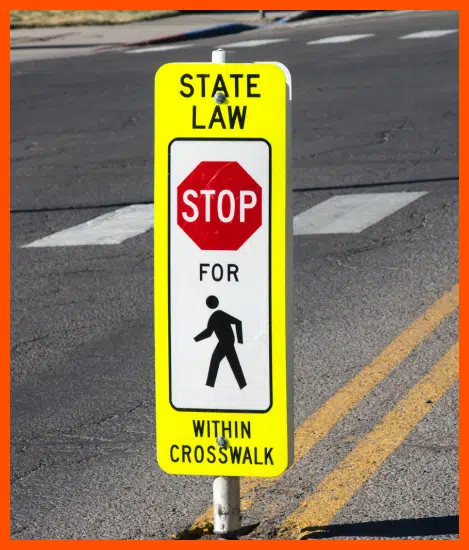
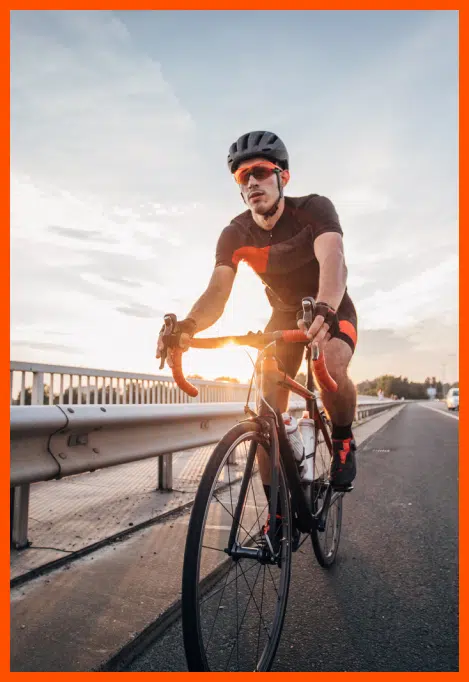
Bicyclist Laws
In general, New York bicyclists must obey the same traffic law as motor vehicle drivers. However, there are additional laws that apply specifically to cyclists:
- Bicycles should only carry the number of passengers they are designed for. A one-seated bicycle, for example, can only hold one person.
- Bicyclists must keep their feet on the pedals at all times.
- Bicyclists can ride two abreast in a lane if there is enough space, but if they need to pass a vehicle or pedestrian, they must do so single-file.
- Before entering a road from a driveway or alley, cyclists should come to a complete stop and check for oncoming traffic.
- Bicyclists riding between “one-half hour after sunset to one-half hour before sunrise” must have a working white headlamp and red or amber tail light visible to other road users.
- Cyclists must use proper hand signals when turning or stopping.
- If involved in a non-motorized bicycle accident that results in an injury, you must exchange contact information with other parties and report the incident to the police.
- Leaving the scene of a bicycle accident that results in “serious injury” is a class B misdemeanor. The parties involved must exchange contact details and report the incident to the police.
Recent Pedestrian and Cyclist Initiatives
Over the past few years, New York City has taken numerous initiatives to improve pedestrian and bicycle safety throughout Queens and other boroughs.
In 2018, the New York City Department of Transportation (NYC DOT) completed a pedestrian crossing and walkway near a busy shopping plaza along North and South Conduit Avenue. The crossing was completed in response to several pedestrian deaths and injuries in the area.
Mayor Eric Adams also announced plans to improve over 2,000 crosswalks throughout the metropolitan area, including in Queens. The city will also remove parking spots next to high-traffic intersections to increase visibility for pedestrians, cyclists, and drivers.
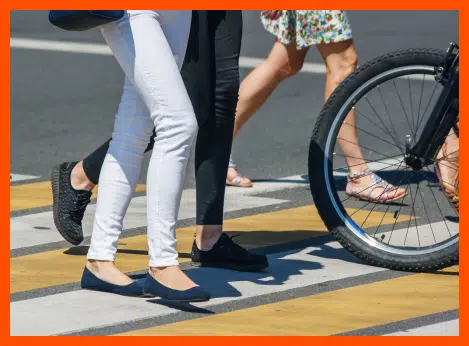
Queens Infrastructure and Design
Queens has a number of walkable and bikeable neighborhoods, including Elmhurst, Jackson Heights, Astoria, and Flushing. However, there is always room for improvement. The city notes that cycling injuries most often occur on streets without bike lanes and at intersections. Wide roads with lengthy crosswalks and left-turn conflicts also increase risks for pedestrians.
The Queens Community Board has several proposals underway to improve pedestrian and cyclist safety. Some initiatives include adding bike paths and pedestrian spaces on certain byways, including Queens Boulevard, Van Wyck Expressway, 82nd Avenue, 83rd Avenue, and Union Turnpike.
Further, in early 2024, Queens announced a $500,000 initiative to improve pedestrian and cyclist pathways along Astoria Boulevard. Numerous pedestrian and vehicle accidents have occurred on the road.
Safety Resources for Queens Pedestrians and Cyclists
New York has many resources that Queens residents can use to gather pedestrian and bicycling information. Some provide safety tips, while others offer maps and reporting tools. These resources include:
- NYC Department of Transportation – Offers real-time traffic conditions, an official NYC Bike Map, and reporting tools.
- New York Bicycling Coalition – Advocates for pro-bicycle and pedestrian laws and funding. The NYBC also offers safety tips and bike tourism maps.
- Make Queens Safer – A local organization dedicated to improving street designs and enforcing traffic laws to protect pedestrians and bicyclists.
- Vision Zero Network – A global nonprofit aimed at eliminating traffic fatalities and injuries.
Advocating for Safer Streets in Queens
Residents, visitors, and tourists rely on thousands of streets, sidewalks, bike lanes, and other thoroughfares for daily transit. If you notice an unsafe path, damaged sidewalk, missing crosswalk sign, blocked bike lane, or other nuisance, report it immediately. Reporting hazards allows the NYC DOT to investigate and make necessary repairs, potentially preventing injuries and fatalities.
Some types of defects are considered higher priority than others. For instance, call 311 if you notice a broken or damaged pedestrian signal. The NYC DOT will address it promptly. Other problems, like sidewalk cracks, can be reported online.
The NYC DOT Customer Services provides a comprehensive list of reporting tools categorized by problem type, which helps keep service tickets organized. If you don’t see your issue listed, you can contact the NYC DOT Commissioner by filling out an online form.
Community Involvement
Residents interested in promoting safe walkways and bicycle lanes are encouraged to join local safety groups and attend public transportation meetings. Your voice makes a difference, and your participation can improve road safety for everyone. Advocacy groups, including Ridgewood Rides and Queens Activist Committee, regularly seek new members and volunteers eager to work toward improving our city streets.
Everyone Shares a Responsibility for Safe Streets in Queens, NY
Over 2 million people use the roads in Queens every day. Everyone has a responsibility to obey traffic safety rules and regulations. Understanding your responsibility as a driver, bicyclist, and pedestrian also helps reduce the risk of preventable injuries and fatalities.
If you or someone you love were injured in a pedestrian or bicycle accident in Queens, our skilled attorneys at Chopra & Nocerino can help you understand your rights and fight for compensation. Call (855) NYC-HURT or reach out online today to schedule a free, no-obligation consultation with our Queens personal injury lawyers today.






